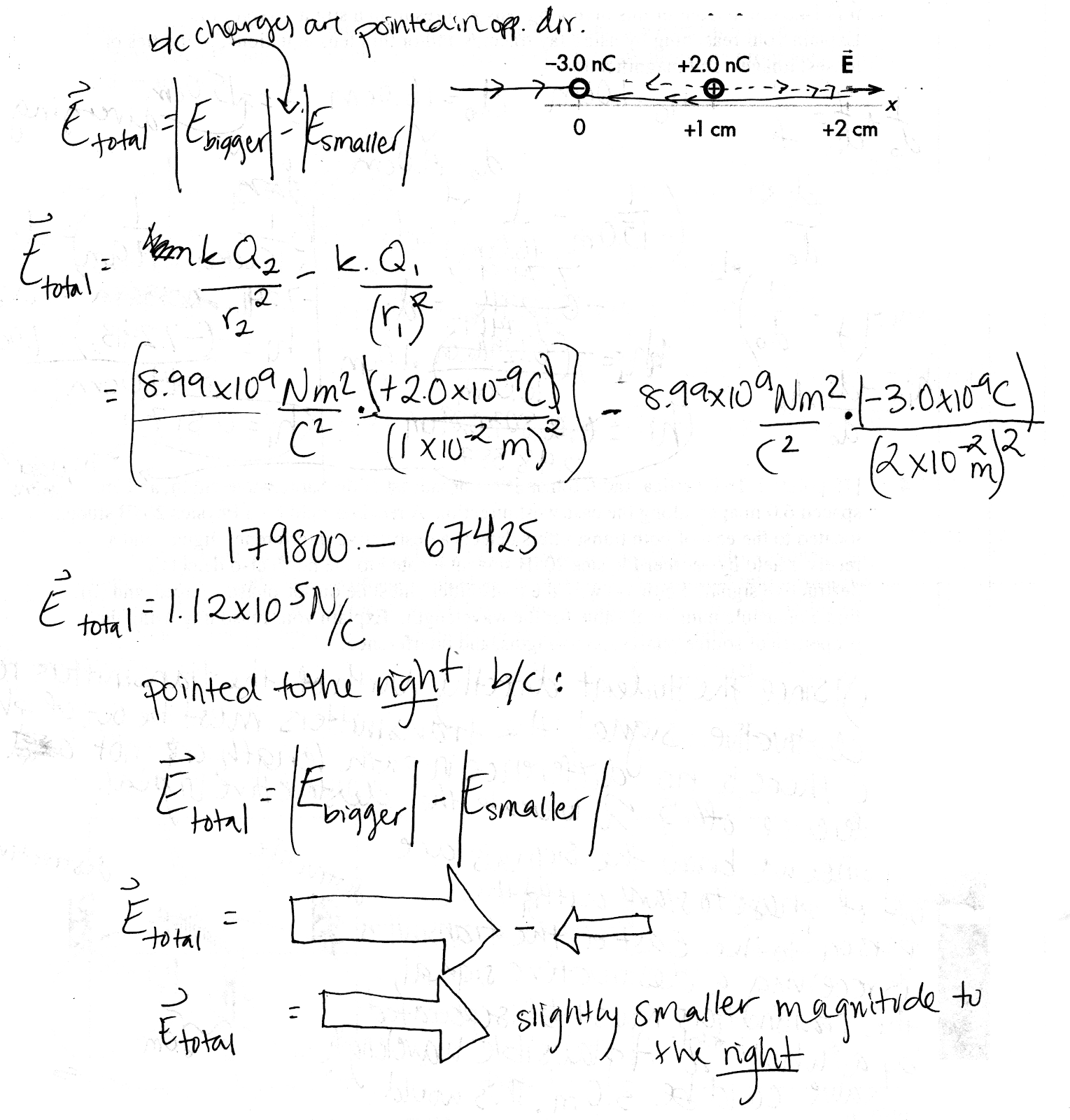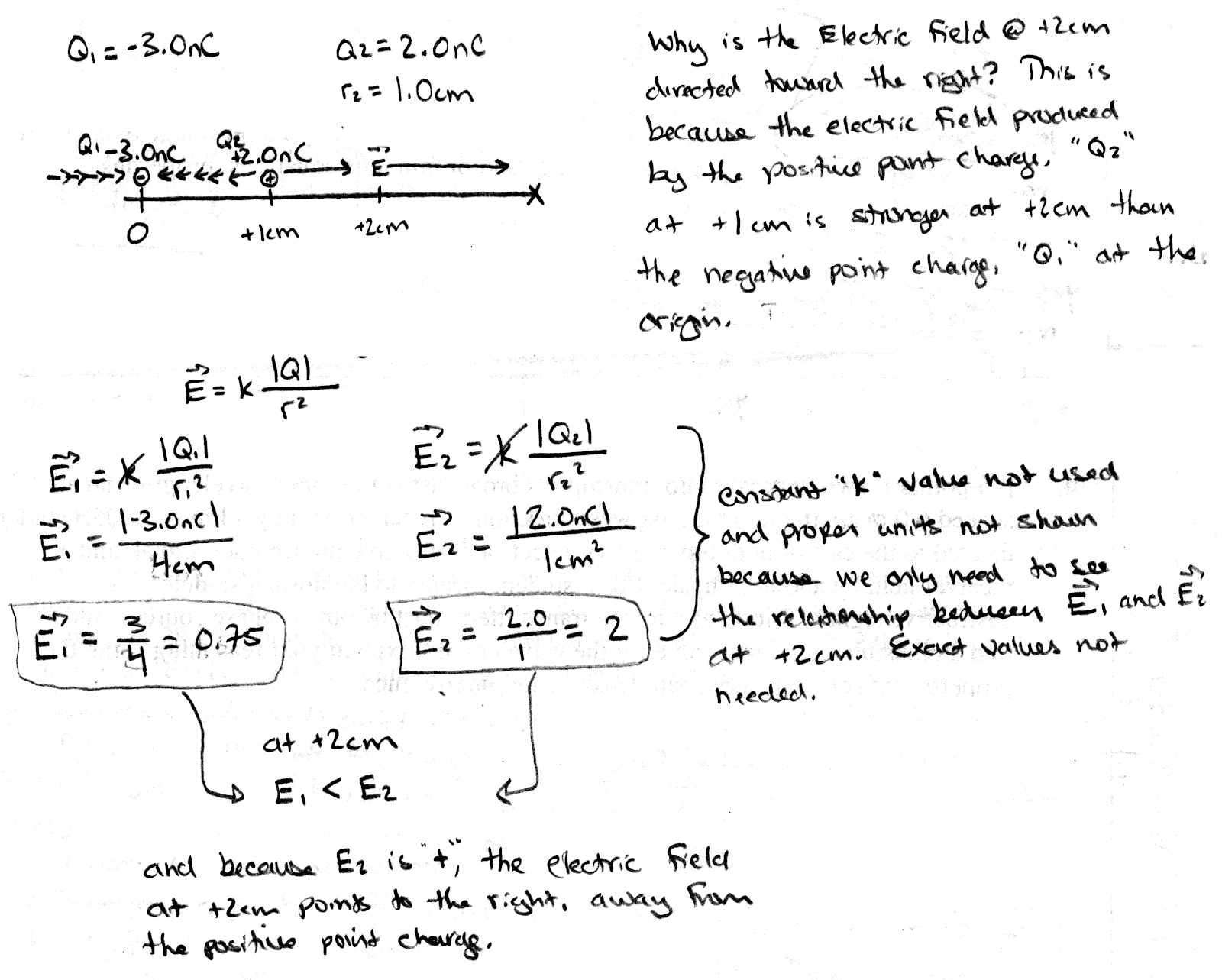Cuesta College, San Luis Obispo, CA
 A –3.0 nC point charge is held at the origin, and +2.0 nC point charge is held at x = +1 cm. Discuss why the electric field at x = +2 cm is directed to the right. Explain your reasoning using properties of electric forces, fields, and vector superposition.
A –3.0 nC point charge is held at the origin, and +2.0 nC point charge is held at x = +1 cm. Discuss why the electric field at x = +2 cm is directed to the right. Explain your reasoning using properties of electric forces, fields, and vector superposition. Solution and grading rubric:
- p:
Correct. Discusses/demonstrates that the (total) electric field at x = +2 cm would point to the right by:- calculating or comparing the individual electric field magnitudes for E2 (larger magnitude, 1.8×105 N/C) and E1 (smaller magnitude, 6.8×104 N/C) created by the source charges Q1 and Q2 at x = +2 cm; and
- determining the individual electric field directions for E1 (to the right, out away from the positive Q1 source charge) and E2 (to the left, in towards the negative Q2 source charge) at x = +2 cm; and
- explaining that the vector superposition of E1 and E2 at x = +2 cm will result in a total electric field that points to the right, as it (a) will have the direction of the larger of two opposite electric field vectors there, or (b) would be the result of the subtraction of a smaller E1 magnitude (to the left) from the larger E2 magnitude (to the right).
- r:
As (p), but argument indirectly, weakly, or only by definition supports the statement to be proven, or has minor inconsistencies or loopholes. - t:
Nearly correct, but approach has conceptual errors, and/or major/compounded math errors. At least some attempt at finding electric field magnitudes and directions created by each source charge at x = +2 cm, and discusses result of the addition of these electric field vectors. - v:
Limited relevant discussion of supporting evidence of at least some merit, but in an inconsistent or unclear manner. Some garbled attempt at applying electric forces, fields, and vector superposition. Typically discusses the force that these charges exert on each other. - x:
Implementation/application of ideas, but credit given for effort rather than merit. No clear attempt at applying electric forces, fields, and vector superposition. - y:
Irrelevant discussion/effectively blank. - z:
Blank.
Sections 30882, 30883
Exam code: midterm01Ft6G
p: 24 students
r: 3 students
t: 6 students
v: 7 students
x: 0 students
y: 0 students
z: 2 students
A sample "p" response (from student 1810):

Another sample "p" response (from student 7843), being more explicit about the different directions of the individual electric fields:

And another sample "p" response (from student 1982), ignoring the common factor of k, and nC and cm unit conversions for purposes of comparison:

No comments:
Post a Comment